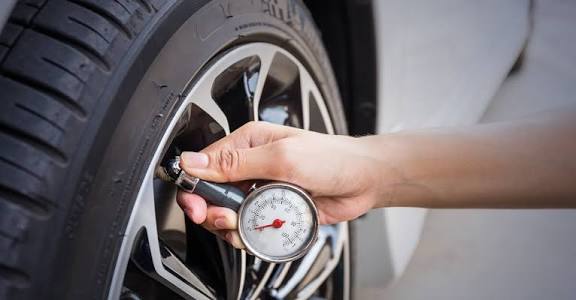
Maintaining the right tire pressure is essential for the safety, performance, and efficiency of your vehicle. Properly inflated tires improve fuel economy, extend tire life, and provide better handling and braking. On the other hand, underinflated or overinflated tires can lead to uneven tire wear, reduced grip, and even dangerous blowouts. In this guide, we will walk you through how to check and maintain your car’s tire pressure effectively.
Why Tire Pressure Matters
Tire pressure directly affects how your car drives and how safe it is on the road. When tires are underinflated, they create more rolling resistance, which means your engine has to work harder and uses more fuel. This not only costs you more money but also increases your carbon footprint. Overinflated tires, meanwhile, can cause a harsh ride and uneven tire wear, making your tires less durable.
Maintaining the correct tire pressure ensures optimal contact between the tire and the road surface. This improves traction, handling, and braking performance, especially in wet or slippery conditions. It also reduces the risk of tire failure and enhances overall driving safety.
How to Check Your Tire Pressure
Checking your tire pressure is simple and only takes a few minutes. Here’s how to do it right:
Find the Recommended Tire Pressure
Before you start, locate the recommended tire pressure for your vehicle. This information is typically found on a sticker inside the driver’s door frame or in the owner’s manual. It will list the ideal pressure measured in pounds per square inch (PSI) for both front and rear tires.
Get a Reliable Tire Pressure Gauge
You can purchase a tire pressure gauge at an auto parts store or online. There are digital and analog options available. Digital gauges are usually easier to read and more accurate, but analog ones work well too.
Check Tire Pressure When Tires Are Cold
For the most accurate reading, check your tire pressure when the tires are cold. This means the car has been parked for at least three hours or has been driven less than a mile at low speed. Driving heats up the tires and increases pressure temporarily, which can give you a false reading.
Remove the Valve Cap and Measure Pressure
Unscrew the valve cap on the tire, press the tire pressure gauge onto the valve stem firmly, and take the reading. Make sure there is no hissing sound indicating air escaping. Note the pressure reading and repeat the process for all four tires.
Compare and Adjust
Compare the measured pressure with the recommended PSI. If the pressure is too low, add air using an air compressor, which you can find at gas stations or purchase for home use. If the pressure is too high, release air by pressing the valve stem until the desired pressure is reached.
Tips for Maintaining Proper Tire Pressure
Regularly checking and maintaining tire pressure helps you avoid many common issues. Here are some tips to keep your tires in good shape:
- Check Tire Pressure regularly
Make it a habit to check your tire pressure at least once a month and before long trips. Tire pressure can fluctuate with temperature changes, so seasonal checks are important.
- Inspect Tires for Damage
While checking the pressure, look for signs of damage such as cuts, punctures, bulges, or uneven wear. Address any issues immediately to prevent accidents or tire failure.
- Don’t Forget the Spare Tire
Many drivers overlook the spare tire, but it’s crucial to keep it properly inflated in case you need it. Check its pressure alongside your regular tires.
- Avoid Overloading Your Vehicle
Excess weight puts more stress on your tires and can cause pressure drops. Follow your vehicle’s load capacity guidelines to maintain safe tire conditions.
- Use Quality Air Sources
When inflating your tires, use air compressors with clean, dry air. Moisture or contaminants can damage the tire’s internal structure.
Benefits of Proper Tire Pressure Maintenance
Keeping your tires properly inflated has several advantages:
- Improved Fuel Efficiency: Proper pressure reduces rolling resistance, saving fuel and reducing emissions.
- Enhanced Safety: Correct tire pressure improves handling, braking, and reduces the risk of blowouts.
- Longer Tire Life: Even tire wear extends the lifespan of your tires, saving you money on replacements.
- Better Driving Experience: Properly inflated tires provide a smoother, more comfortable ride.
